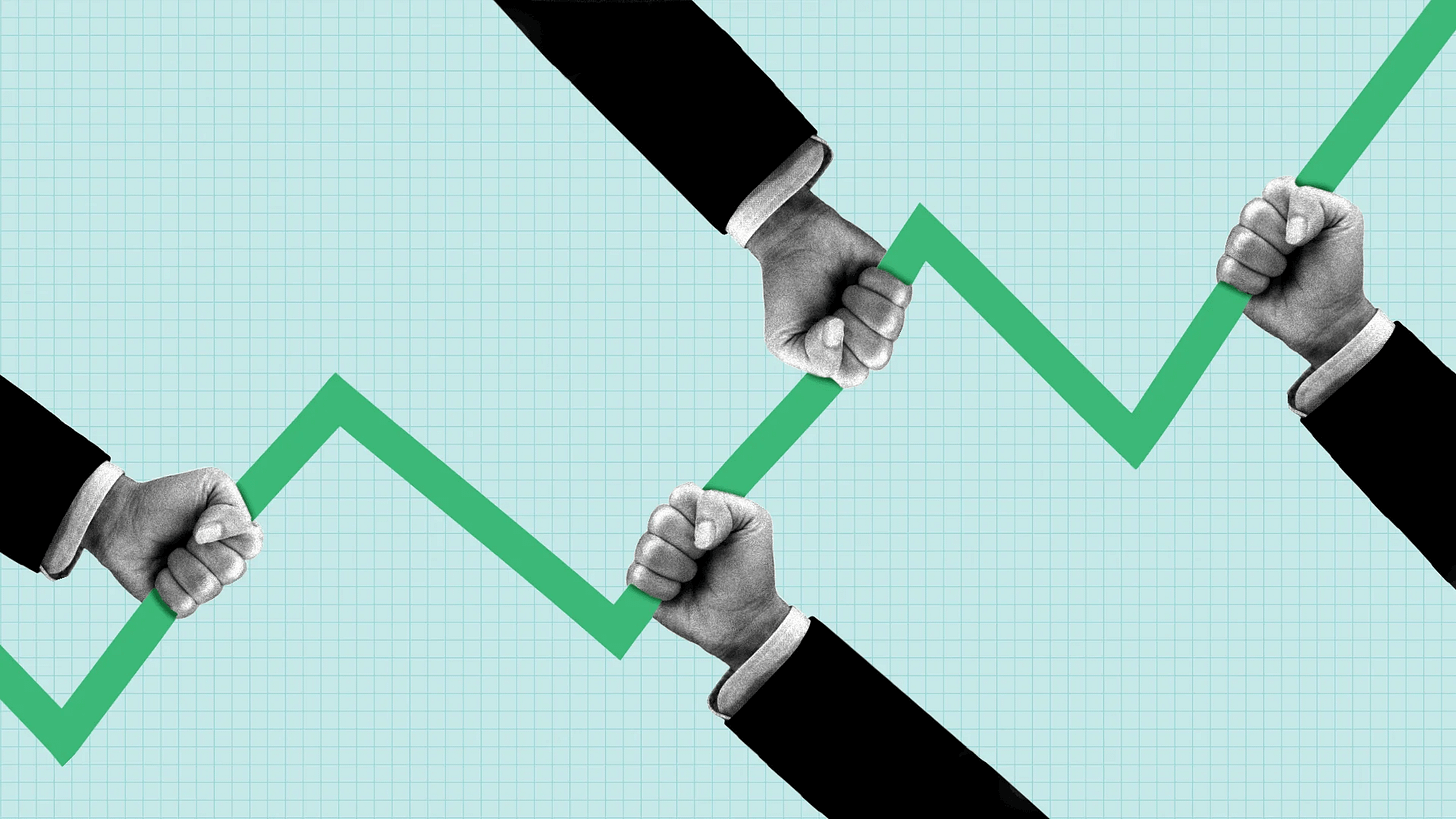AI: Technology, Productivity, and the Economy
...it's the long lags and complex fluid dynamics
The Bigger Picture, March 9, 2024
Economists are again trying to discern the impact of technologies like AI on productivity in the general economy. These efforts saw their peak when then Fed chairman Alan Greenspan of ‘Irrational Exuberance’ fame, talked about ‘Technology and the Economy’ at the height of the nineties Internet boom in early 2000. The same questions and issues he spoke about over two decades ago, are coming up again with the stock market at new heights. With the economy outperforming against expectations, and Big Tech ‘Magnificent 7’ companies leading the indices.
But having been at the table back in the Internet days, and now again at the AI Tech Wave table, I’d like to underline how fraught it is to link technology innovations to productivity metrics in the broader economy. That is the Bigger Picture I’d like to address this Sunday. Let me explain.
But first, going back to Greenspan’s talk on Technology and Productivity in the Economy on January 13, 2000, he noted:
“The evidence of dramatic innovations--veritable shifts in the tectonic plates of technology--has moved far beyond mere conjecture. On the other hand, these extraordinary achievements continue to be bedeviled by concerns that the so-called New Economy is spurring imbalances that at some point will abruptly adjust, bringing the economic expansion, its euphoria, and wealth creation to a debilitating halt. This evening I should like to address some of the evidence and issues that pertain to these seemingly alternative scenarios.”
“What should be indisputable is that a number of new technologies that evolved largely from the cumulative innovations of the past half century have now begun to bring about awesome changes in the way goods and services are produced and, especially, in the way they are distributed to final users. Those innovations, particularly the Internet's rapid emergence from infancy, have spawned a ubiquity of startup firms, many of which claim to offer the chance to revolutionize and dominate large shares of the nation's production and distribution system.”
“Capital markets, not comfortable dealing with discontinuous shifts in economic structure, are groping for sensible evaluations of these firms. The exceptional stock price volatility of most of the newer firms and, in the view of some, their outsized valuations, are indicative of the difficulties of divining from the many, the particular few of the newer technologies and operational models that will prevail in the decades ahead.”
The whole piece is worth reading in full again almost two dozen years later. History rhymes. The question of the economy and productivity has of course arisen again over two decades later, in these early days of the AI Tech Wave.
As the WSJ highlights in “The Shift That Explains Lofty Markets: The Economy Got More Productive”:
“There is a lot of bubble talk lately, but it’s easy to tell a story of how recent market gains could be largely justified.”
“Stocks have proved remarkably resilient to rising bond yields this year. Many think this is because a bubble is inflating, especially in stocks linked to artificial intelligence. Here’s the alternative, in one word: productivity.”
“Productivity gains—that is, more output for the same amount of work—allow more growth without inflation, helping explain the market’s switcheroo from treating a strong economy as bad for shares to treating it as good (although stock prices still look optimistic to me). The risk is that the market is treating the undeniable short-term productivity gains of the past year as evidence that long-term gains are on the way.”
And then proceeds to link the productivity argument to technology and AI this time:
“In the long term, many investors hope that gains from new technologies, particularly AI, will lead to a sustained productivity boom akin to that in the 1960s or late 1990s. Higher productivity means higher interest rates than otherwise, but for the stock market that should be offset by the higher profits that growth brings.”
I remember having these discussions with our Economists at Goldman Sachs in the nineties when the first Internet boom was in full bloom, when I headed the Internet Research effort at the Firm.
After a fair bit of work with our Economics team, it became clear that it wasn’t easy to connect bottom up technology driven change and growth to top down macro economic numbers. At the very least to consider was the considerable LAG effect between the impact of new technologies on every facet of the broader economy across many industries. Then to net out the positive vs the negative impacts of the technologies, and discern patterns that provide clear proof of the linkage between tech innovation and productivity at a macro level.
It was a complex problem in fluid dynamics, built out across almost every industry in the economy, top to bottom.
It was clear back then that it would take a decade or more to begin to see that impact. In hindsight it’s taken longer. There are many factors at work, but two I’d highlight for today would be the ‘Consumer Surplus’ impact, and what’s known as Jevon’s Paradox.
Both are well studied in the field of economics for a century and longer, and both are founded in the bottom up benefits of technology innovations on accruing 'surplus’ value to consumers (and enterprises), by providing more value with new products and services than before. Think no longer needing separate fax machines, phones, TVs, DVD players, and other devices with the PC and then smartphones. Jevon’s Paradox addresses how technology increases efficiency in some aspect of human productivity, thus potentially needing less of that input. But paradoxically economists have found it drives the usage of more of that input.
This is particularly being seen in the move towards more climate change efficient technologies. As the NYTimes recently noted in “The Paradox Holding Back the Clean Energy Revolution”:
“In the 1990s, when multicolor LED lights were invented by Japanese scientists after decades of research, the hope was that they would help to avert climate catastrophe by greatly reducing the amount of electricity we use. It seemed perfectly intuitive. After all, LED lights use 90 percent less energy and last around 18 times longer than incandescent bulbs.”
“Yet the amount of electricity we consume for light globally is roughly the same today as it was in 2010. That’s partly because of population and economic growth in the developing world. But another big reason is there on the Las Vegas Strip: Instead of merely replacing our existing bulbs with LED alternatives, we have come up with ever more extravagant uses for these ever-cheaper lights, from immersive LED art installations and carpets that glow to basketball courts that can play video. As technology has advanced, we’ve only grown more wasteful.”
All this has a direct bearing on how we think AI will impact the economy at large, and AI fears on jobs in particular, be they white or blue collar. The fears of AI shrinking jobs in particular may be premature.
While my former Goldman Sachs colleagues project a net $7 plus trillion addition to the global economy in a decade due to Generative AI, the immense amount of changes underneath the economic iceberg is still very difficult to see in some detail.
The same goes for linear projections on how AI might impact job loss. If AI is on track like most technology waves before it, it counter-intuitively will lead to far more net job growth than currently assumed. And this time that impact will be far more global than the PC and Internet waves, when most of the impact was in developed economies. Today over two thirds of Internet users, over 3 billion, are in developing economies. And those numbers are rising fast with technologies beyond just AI.
The core calculation problem is that the net technology impact lag, and provable connections, are measured in decades. From the time of the technologies’ impact, to its measurable effects in economic numbers.
It’s a massive calculus problem not an algebraic one. There are way too many variables with immense cross currents. It’s how predicting the weather beyond a few days, even with today’s technologies, generally becomes a coin-toss exercise.
And as I’ve outlined many times on this site, this time vs previous technology waves, we have to factor in Geopolitics, AI Safety fears, Global Regulatory forces prematurely fearful of AI, and Re-Globalization as additional qualitative headwinds, that add to the fluid quantitative complexity of figuring out ther net economic productivity impacts.
But despite all this fluid complexity, there’s something real in terms of the net positive impact of technology on economic growth. Especially through the last couple of centuries in terms of consumer surplus, Jevons Paradox, and other technology productivity impacts on the economy. And the AI Tech Wave is likely to be just as positively potent.
But the AI impact likely will not be measurable as we’d like for at least a decade or more. Even though this new wave has begun. It’s the long lags and complex fluid dynamics. The net impact will take time to discern. And that’s the Bigger Picture this Sunday. Stay tuned.
(NOTE: The discussions here are for information purposes only, and not meant as investment advice at any time. Thanks for joining us here)








I think we should be cognizant of teh fact that AI in its various forms has been available for many decades. t has become increasingly useful as each stage matures. The current hot (hyped) technology is LLMs which due to its easy user interface (text prompts) has caught the imagination. While some evamgelists have said it increases their productivity, it remains to be seen if it will really do that or not. I expect it will for some areas of work.
However, as we have seen with decades of software, that doesn't translate into measured productivity gains for the economy, and certainly not in wages. The big concern is that currently LLMs are extremely energy intensive, both in training and deployment. IDK is that is going to be acceptable.
I expect to wait for the hype cycle to reach the "plateau of productivity" before we know the place of LLMs and very similar technology in the economy, and whether it will show useful productivity gains to boost GDP, or be more domestic and be primarily used at play, like spreadsheets, wordprocessors, browsing the WWW, and "photoshopping" images.